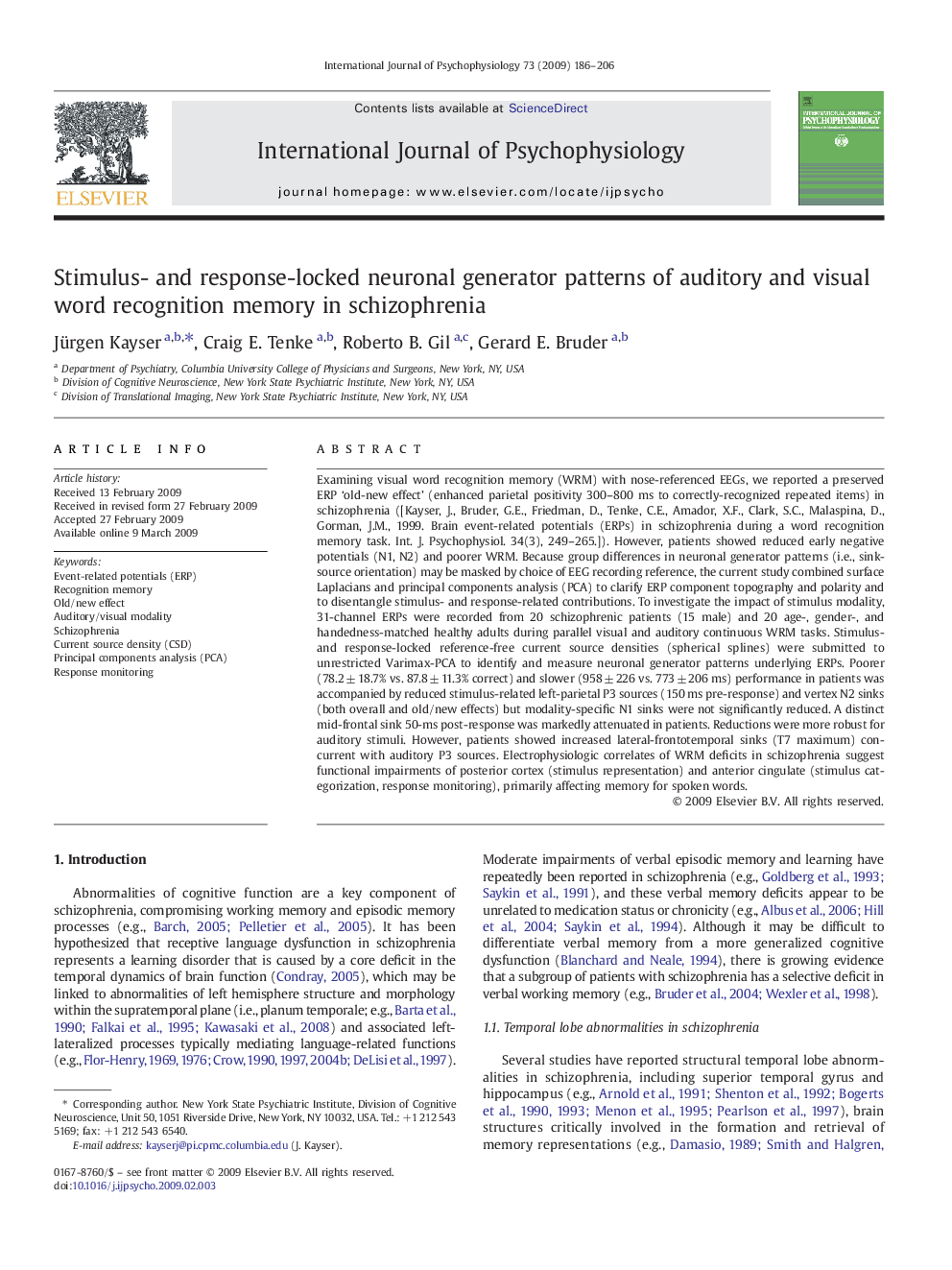| کد مقاله | کد نشریه | سال انتشار | مقاله انگلیسی | نسخه تمام متن |
|---|---|---|---|---|
| 7296368 | 1474475 | 2009 | 21 صفحه PDF | دانلود رایگان |
عنوان انگلیسی مقاله ISI
Stimulus- and response-locked neuronal generator patterns of auditory and visual word recognition memory in schizophrenia
دانلود مقاله + سفارش ترجمه
دانلود مقاله ISI انگلیسی
رایگان برای ایرانیان
کلمات کلیدی
Old/new effect - اثر قدیمی / جدیدSchizophrenia - اسکیزوفرنی یا شیزوفرنیPrincipal components analysis (PCA) - تجزیه و تحلیل اجزای اصلی (PCA)Current source density (CSD) - تراکم منبع جریان (CSD)Recognition memory - حافظه تشخیص یا شناختresponse monitoring - نظارت بر پاسخEvent-related potentials (ERP) - پتانسیل مربوط به رویداد (ERP)
موضوعات مرتبط
علوم زیستی و بیوفناوری
علم عصب شناسی
علوم اعصاب رفتاری
پیش نمایش صفحه اول مقاله

چکیده انگلیسی
Examining visual word recognition memory (WRM) with nose-referenced EEGs, we reported a preserved ERP 'old-new effect' (enhanced parietal positivity 300-800 ms to correctly-recognized repeated items) in schizophrenia ([Kayser, J., Bruder, G.E., Friedman, D., Tenke, C.E., Amador, X.F., Clark, S.C., Malaspina, D., Gorman, J.M., 1999. Brain event-related potentials (ERPs) in schizophrenia during a word recognition memory task. Int. J. Psychophysiol. 34(3), 249-265.]). However, patients showed reduced early negative potentials (N1, N2) and poorer WRM. Because group differences in neuronal generator patterns (i.e., sink-source orientation) may be masked by choice of EEG recording reference, the current study combined surface Laplacians and principal components analysis (PCA) to clarify ERP component topography and polarity and to disentangle stimulus- and response-related contributions. To investigate the impact of stimulus modality, 31-channel ERPs were recorded from 20 schizophrenic patients (15 male) and 20 age-, gender-, and handedness-matched healthy adults during parallel visual and auditory continuous WRM tasks. Stimulus- and response-locked reference-free current source densities (spherical splines) were submitted to unrestricted Varimax-PCA to identify and measure neuronal generator patterns underlying ERPs. Poorer (78.2 ± 18.7% vs. 87.8 ± 11.3% correct) and slower (958 ± 226 vs. 773 ± 206 ms) performance in patients was accompanied by reduced stimulus-related left-parietal P3 sources (150 ms pre-response) and vertex N2 sinks (both overall and old/new effects) but modality-specific N1 sinks were not significantly reduced. A distinct mid-frontal sink 50-ms post-response was markedly attenuated in patients. Reductions were more robust for auditory stimuli. However, patients showed increased lateral-frontotemporal sinks (T7 maximum) concurrent with auditory P3 sources. Electrophysiologic correlates of WRM deficits in schizophrenia suggest functional impairments of posterior cortex (stimulus representation) and anterior cingulate (stimulus categorization, response monitoring), primarily affecting memory for spoken words.
ناشر
Database: Elsevier - ScienceDirect (ساینس دایرکت)
Journal: International Journal of Psychophysiology - Volume 73, Issue 3, September 2009, Pages 186-206
Journal: International Journal of Psychophysiology - Volume 73, Issue 3, September 2009, Pages 186-206
نویسندگان
Jürgen Kayser, Craig E. Tenke, Roberto B. Gil, Gerard E. Bruder,